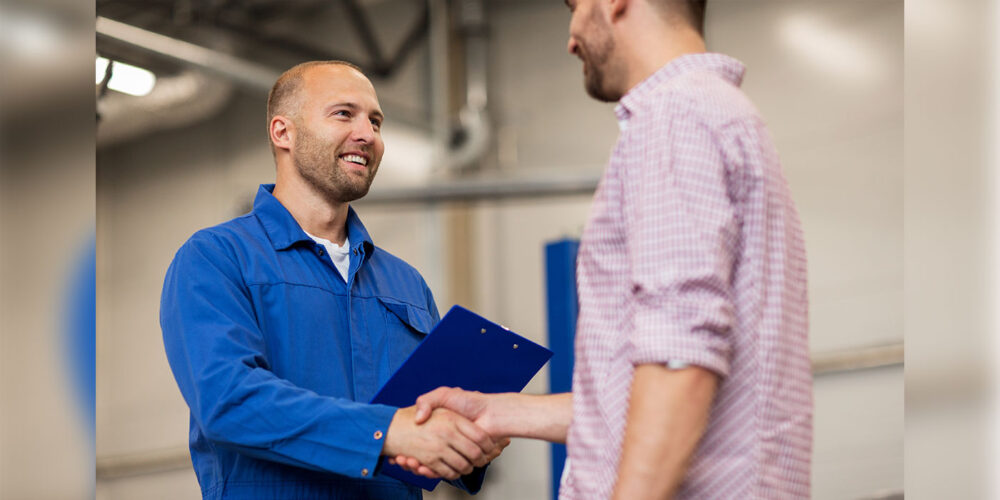Historically, consumers spent hours online searching for their next vehicle — often researching for years — and usually would not make any contact with the dealership until they walked through the door. Then, inside the dealership the consumer was met with a minimum of three hours shopping for a vehicle, including a lengthy process of negotiating and paperwork, leaving them exhausted.
There was also an uneven number between sellers and buyers, and while there were online car-shopping experiences available then, they were not nearly as seamless as they are today.
The transition to digital retailing was slow until the pandemic hit. This was the catalyst for the automotive industry to make the shift, mostly due to demand — people could not walk into dealerships like they did pre-COVID. Today, online buying experiences are gaining traction with consumers, putting the enthusiasm back in car shopping. But consumers aren’t the only ones that benefit from this opportunity — dealerships have a lot to gain from adopting an e-commerce model, too, which can strengthen their connection with shoppers.
Current State
The industry is facing numerous challenges such as the ongoing presence of COVID, chip shortages, gas prices, inflation and more contributing to a constrained supply chain and price increases; the new-vehicle average transaction prices rose to $48,182 in July 2022, up 11.9% ($5,126) from a year ago. With fewer new cars on the market, this also pushes up used-car prices to an all-time high. With all of that — consumers are still shopping. Online shopping behavior has strengthened, as people contact more dealerships and swiftly act on vehicles that will likely be sold quickly.
Consumers are even inclined to travel to purchase a vehicle and they don’t necessarily care where it comes from, so long as it’s in their price range and they get it in a timely fashion. But while the demand is high, there isn’t inventory to match, and the shortage is unexpectedly creating more velocity.
Where Technology Can Help
While the technology discussed here can’t produce more inventory, it can connect consumers and dealerships at every touch point, allowing for more transparency. Today, standalone solutions can be brought together to complete the picture with data and tools that can help through every stage of the purchase cycle: explore, consider, select and buy.
In 2021, our websites received an increase in unique visitors of 12% and an increase in overall visits of 17%. This means consumers are doing more research online before ever entering a lot. Digital retailing accelerated as a means of survival in the dealership and now has become the way to do business. Most digital buyers are more satisfied — spending almost an hour less at the dealership than mostly in-person buyers — which leads to loyalty.
As a byproduct of online shopping, dealerships are encouraged to be more transparent. For example, now they are offering up details such as shipping costs across the country. What they have realized is consumers are willing to pay, so long as they are aware upfront. This transparency online can give dealerships a leg up over competition that may not offer digital retailing.
Tips to Combat Current and Future Challenges
With the market changing at an unpredictable, rapid pace, it is vital for dealerships to adapt and try new things, knowing what worked yesterday may not be the same for today. Dealerships should:
- Consider inventory management software to maximize profitability by keeping a pulse on local market data to appropriately stock vehicles and inform pricing strategies.
- Integrate a CRM system with their website which will give the consumer an omnichannel experience and provide dealers with rich data, letting them know exactly what the shopper is looking for in a new car.
- Focus on pre-orders — according to our research, 37% of intended car buyers said they would wait up to six months for the right car.
Looking Ahead
The shift to digital retailing is a necessary change and one that is here to stay. We are estimating that the new-vehicle inventory shortage will begin to improve by the end of this year and most of the purchase cycle will be primarily conducted online with an estimated 15.3 million new-vehicle sales for 2022.
We are also expecting higher vehicle prices, higher interest rates and supply issues that will impact the market into 2023. Considering the used-vehicle market is expected to decline and supply to remain low, staying in front of the customer throughout their digital journey should be a priority. Technology is an important tool to help dealerships stay transparent, competitive and keep up with demand. Ultimately, it is paving the way for a more connected, automated and seamless future.










